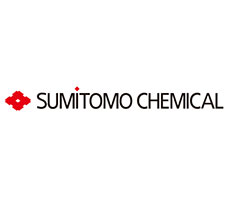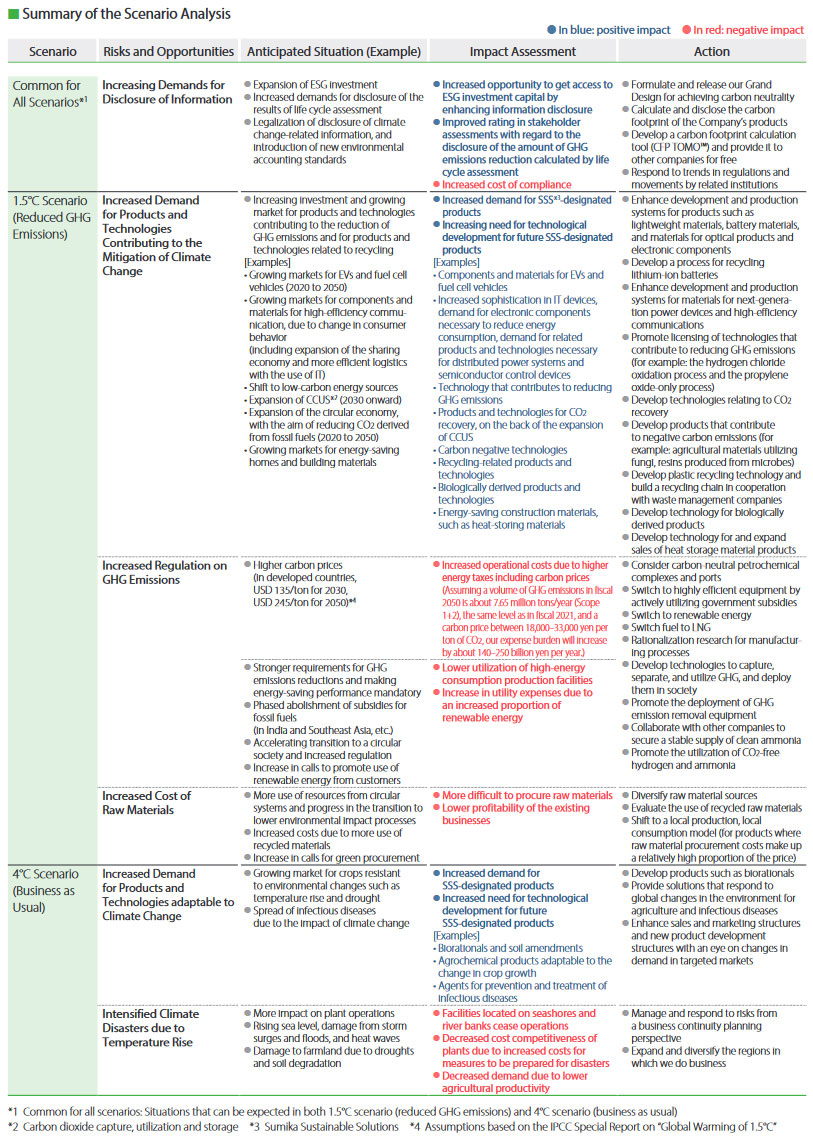Footnote
(Note 1) The Sumitomo Chemical Group defines microbial pesticides, plant growth regulators and rhizosphere microbial products derived from natural sources, as well as solutions using these products to protect crops from pests and enhance crop quality and yield, as “biorationals.”
(Note 2) *3 “SSS” in Fig. 1 refers to our Group's initiative to certify our products and technologies that help to address global warming, reduce environmental impact and promote effective use resources as Sumika Sustainable Solutions (SSS).
Scenario Analysis for Information Disclosure Based on TCFD Recommendations
SUMITOMO CHEMICAL COMPANY, LIMITED
| Publication date | September 1, 2022 (Posted on April 24, 2023) |
|---|---|
| Sector | Industrial and economic activities |
Company Overview

SUMITOMO CHEMICAL COMPANY, LIMITED was established in 1913 to manufacture fertilizers from sulfur dioxide emitted from smelting operations at the Besshi copper mine in Niihama, Ehime Prefecture, with the aim of solving environmental problems caused by the emissions. At present, the Sumitomo Chemical Group operates businesses in five sectors - Essential Chemicals & Plastics, Energy & Functional Materials, IT-related Chemicals, Health & Crop Sciences, and Pharmaceuticals - and provides products worldwide that support a wide variety of industries and help people's daily lives.
Climate Change Impacts
We recognize that the intensified climate disasters caused by temperature rise will cause impacts on our operations including damage to production facilities, and we consider the issue of climate change as a major risk to our business.
Adaptation Initiatives
Recognizing the risks above, we expressed our support for the Task Force on Climate-related Financial Disclosures (TCFD) recommendations in June 2017, and have been conducting scenario analysis based on the TCFD recommendations every year since 2019. We analyze the risks and opportunities of future climate change considering multiple scenarios, predict the impact of climate change on business, and evaluate the future actions that need to be taken (Fig. 1).
Three scenarios were selected for use: the 1.5°C (reduced GHG emissions) scenario, in which a variety of measures are taken to limit average global temperature increase to 1.5°C above pre-industrial revolution levels; the 4°C (business as usual) scenario, in which countermeasures are not taken and temperature increase by 4°C; and the common for all scenarios, in which situations that can be expected in both scenarios described above, including increasing demands for disclosure of information, are identified.
As opportunities and physical risks posed by the impacts of climate change, increased cost of raw materials (opportunity) were identified in the 1.5°C (reduced GHG emissions) scenario, and increased demand for products and technologies adaptable to climate change (risk) and intensified climate disasters due to temperature rise (risk) were identified in the 4°C (business as usual) scenario, and impacts of climate change on our business were assessed (Fig. 1).
Effects / Expected Benefits
Recognizing the impacts of climate change on our business identified through scenario analysis, we are evaluating actions to manage and respond to risks from business continuity planning, and expand and diversify the regions in which we do business (Fig. 1).
As for opportunities, we are also working to develop products such as biorationals (Note 1) , provide solutions that respond to global changes in the environment for agriculture and infectious diseases, and enhance our sales and marketing structures and new product development structures with an eye on changes in demand in targeted markets.

Fig. 1 Summary of the Scenario Analysis

